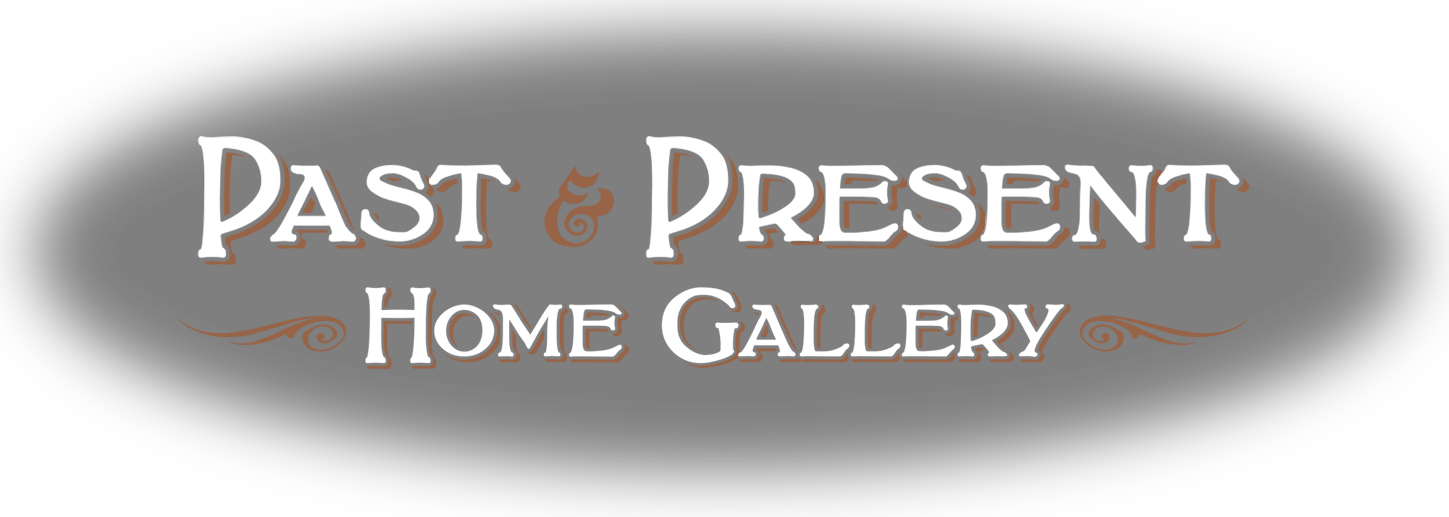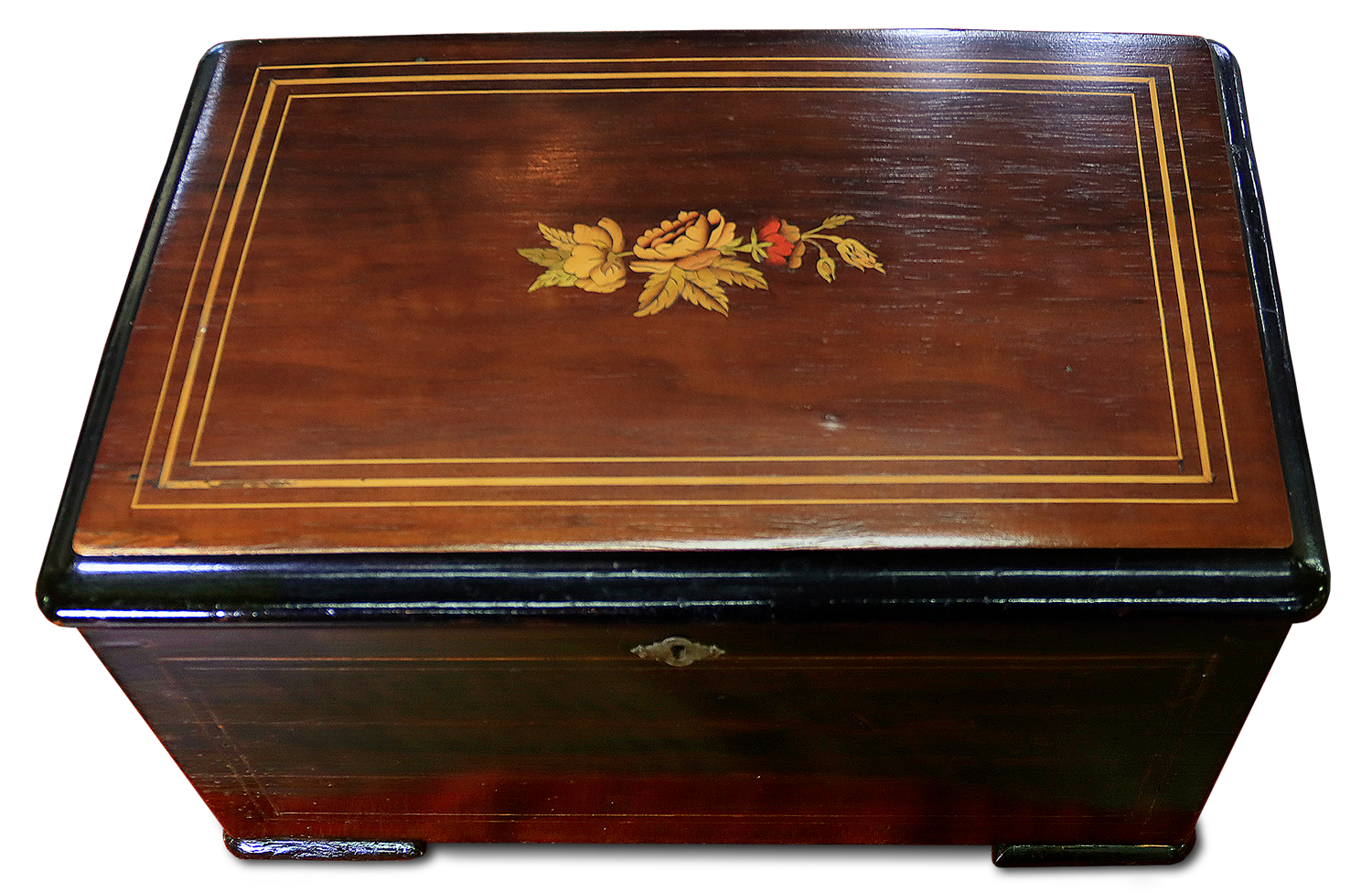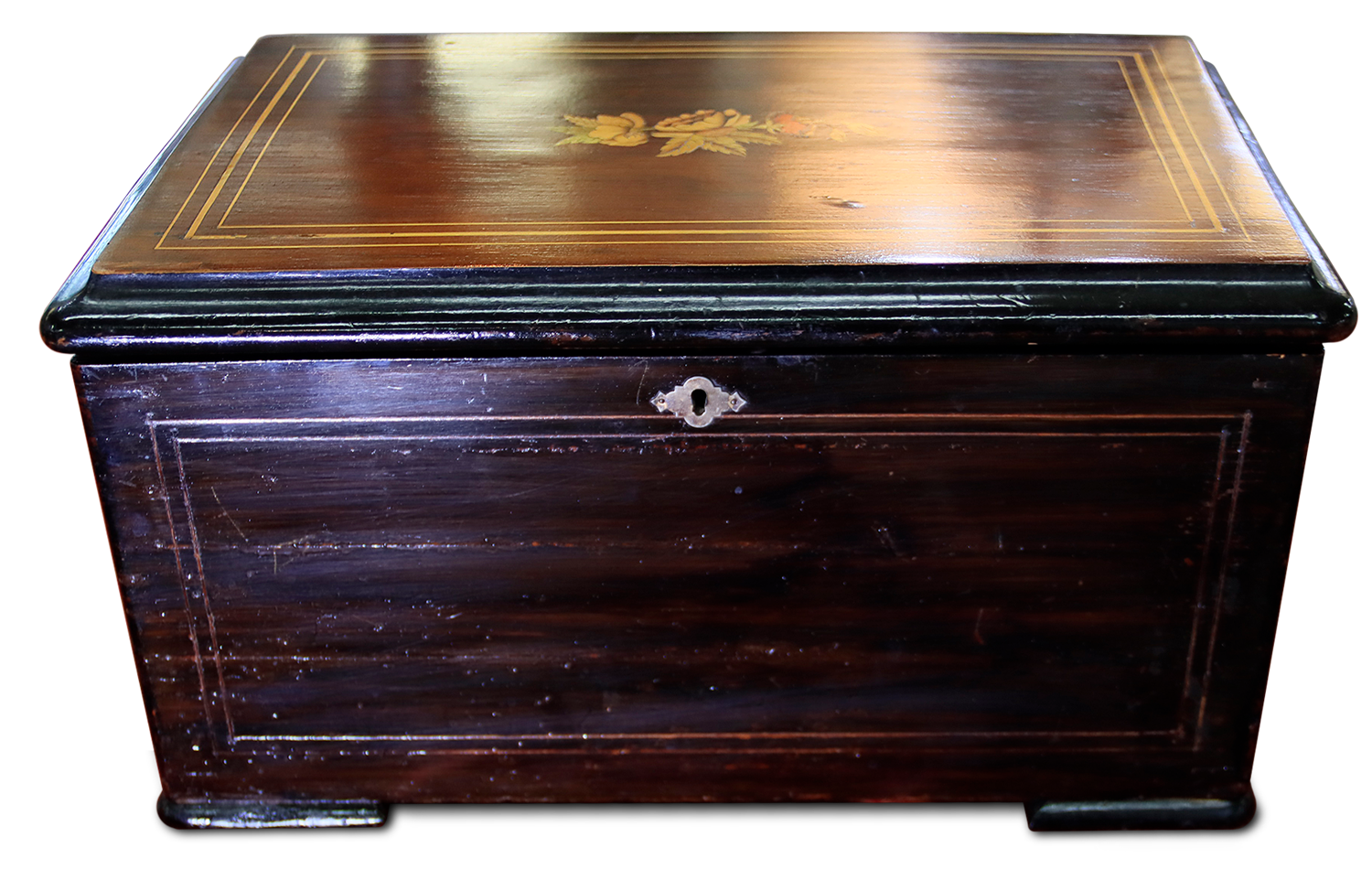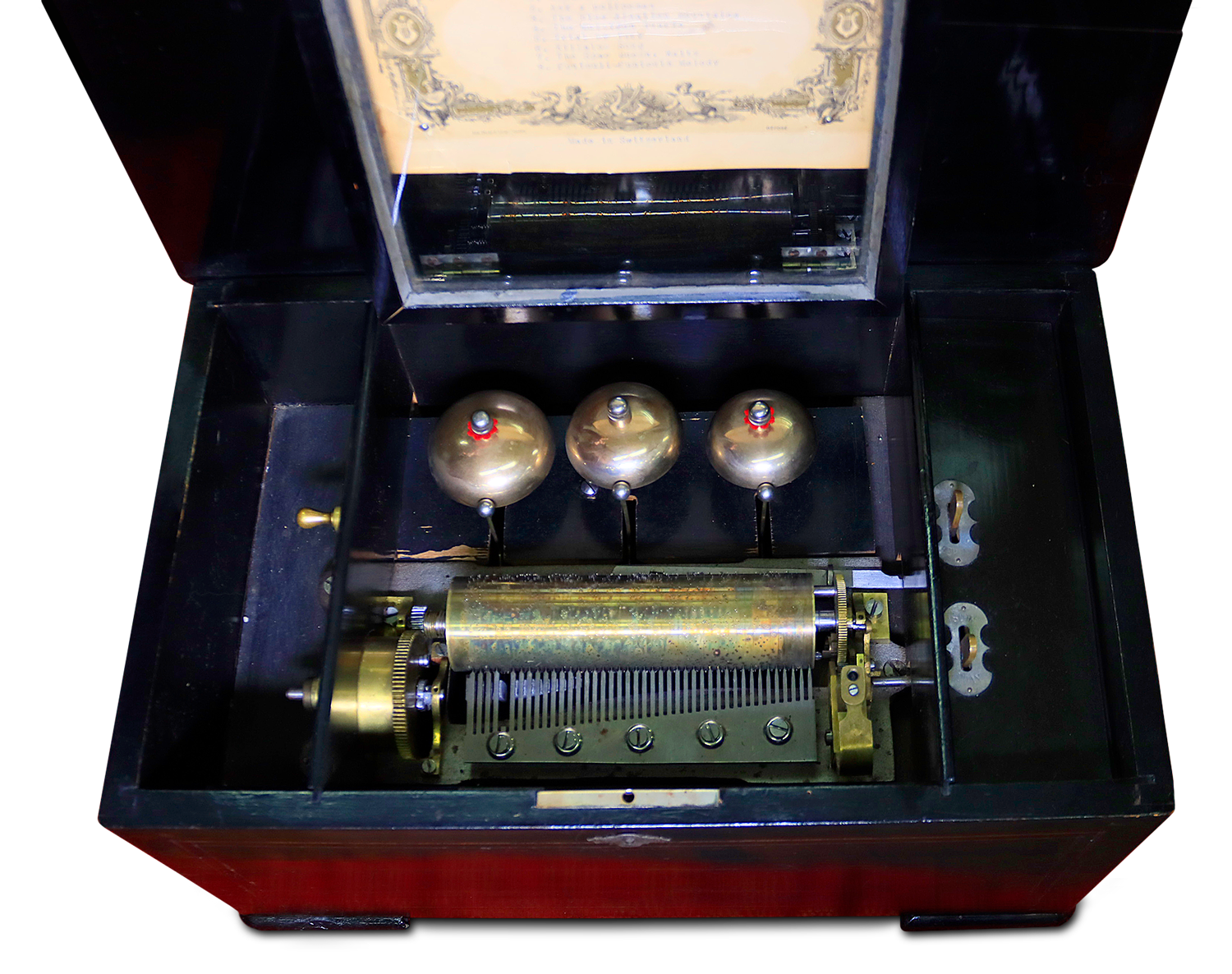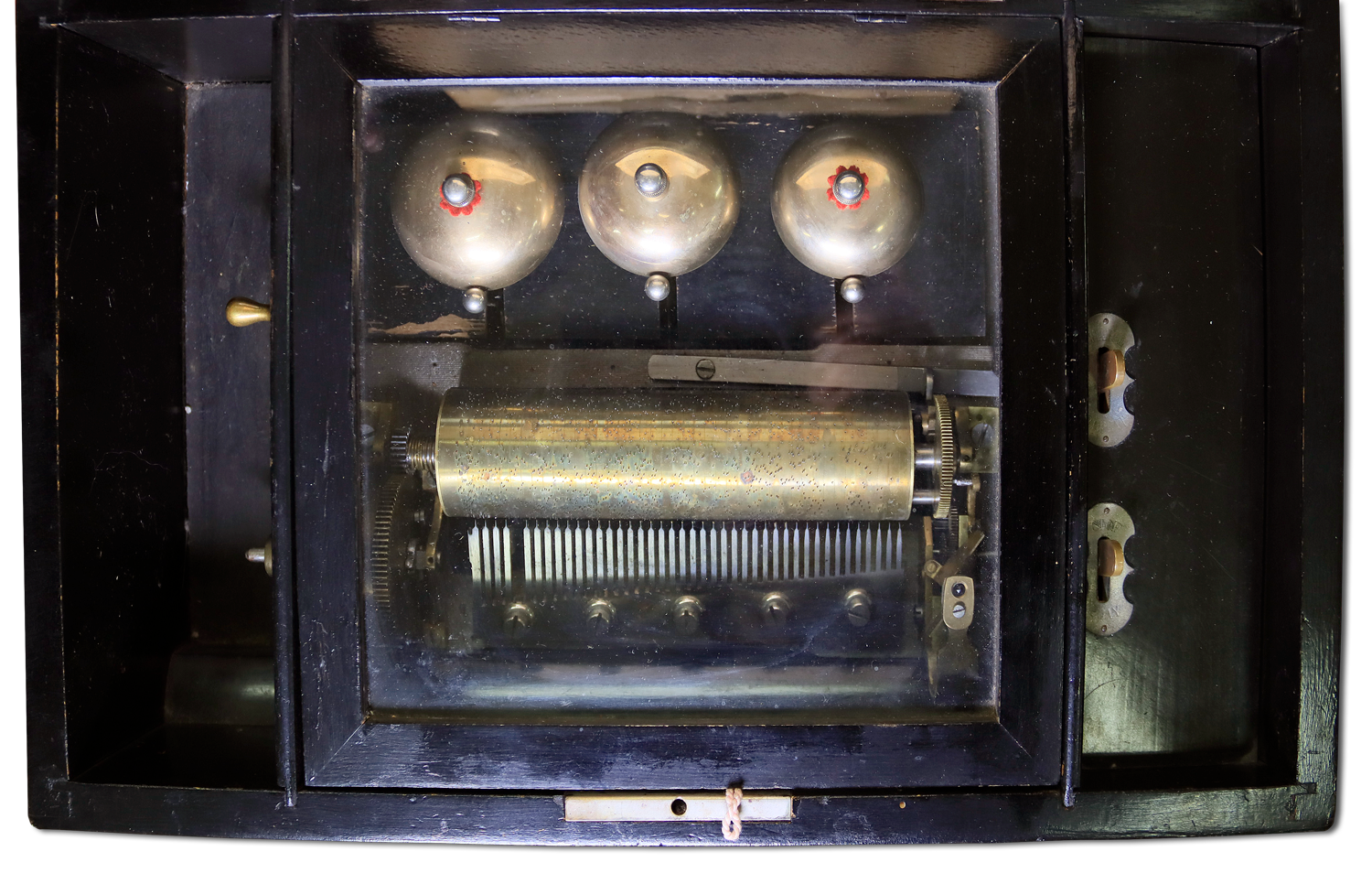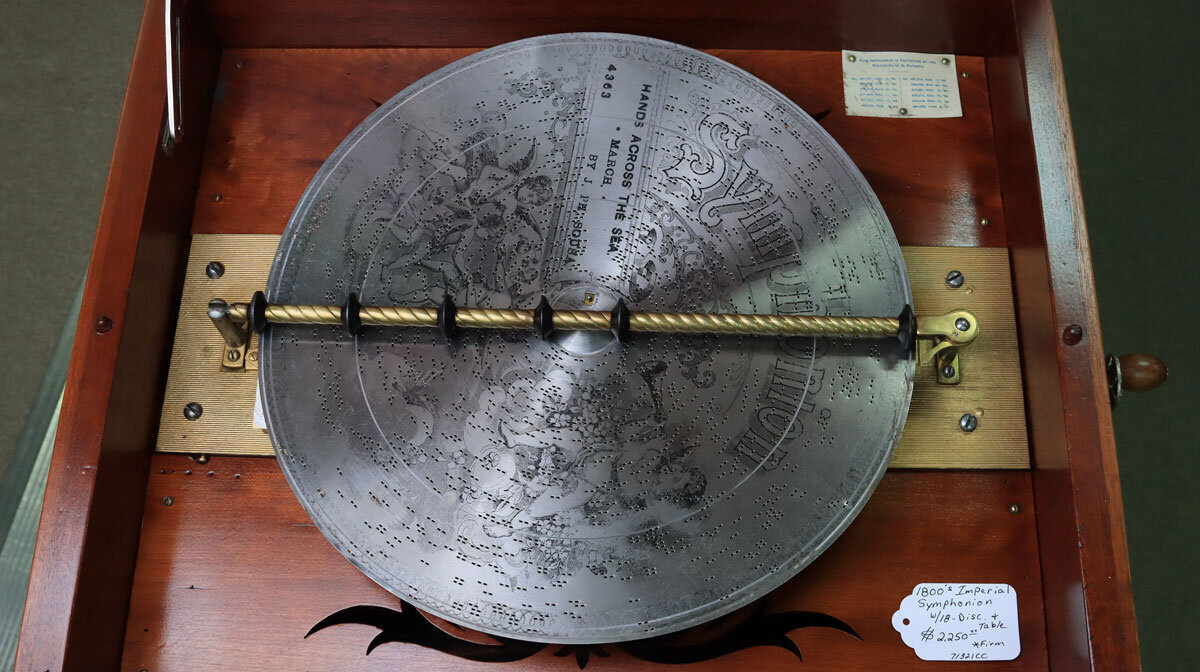Experience the Sounds of Yesteryear with this Antique, 8 Airs Musical Device
Image of the antique, 8 airs musical device
We’ve all seen music boxes, whether they worked or not, but have you experienced the wonderment that accompanies hearing one play songs from centuries ago?
Past and Present has recently acquired a gorgeous, almost pristine music box that was made in Switzerland around the late 1800s. Take a peek at some of its unique features and stunning designs, then stop into the gallery and hear it play for yourself!
The Brief History of Mechanical Music
An often-forgotten relic of the past, the music box serves an important piece of musical history. While no individual has ever been coined the inventor of the first music box, it is believed that Swiss watchmaker, Louis Favre, was the first to make one in the eighteenth century. It wasn’t until 1815 that the first music box factory was opened in Switzerland, and it quickly became the top producer of musical wonders throughout the globe.
By the mid-1800s, the ‘rachet wind’ design began appearing in new models – the very design which belongs to the music box found at Past and Present Home Gallery. Boxes of this category played anywhere from 6 – 12 songs per cylinder.
As years went by, more elements were added such as zithers, bells (as seen in our music box), castanets, cymbals, and even mechanical figurines which moved in time with the songs as they played. These developments made music boxes costly, and it wasn’t long before they became coin-operated sources of entertainment found at fairs, carnivals, and other sites of amusement.
DID YOU KNOW…
Making the cylinders for a music box was a lot harder than you think! First, a flat piece of metal had to be cut for the transposer to mark where the notes were needed to play. From there, the metal traveled to different Swiss homes where fine holes were pinned.
Next, it often went to orphanages where young workers inserted small metal pins to the openings of the holes. Finally, it was sent to a Swiss craftsman who took the completed piece of metal and turned it into a cylinder for the music box. What a journey!
Ultimately, the music box would die at the hand of another improvement in musical devices known as the ‘phonograph’. Today, music boxes are still made and sold, though the grandeur that once accompanied them has mostly become a luxury lost to time.
About This 8 Airs Antique Music Box
When you open this hinged door that has been expertly marked with a colorful floral decal, you’ll reveal the inner workings of what was once one of the most sought-after pieces during the Victorian era. Made in Switzerland, this dark varnished music box has cylindrical mechanics and features three visible bells which chime appropriately when struck by their corresponding hammer.
On the left is a small handle that, when pulled forward, ‘wind’ the music box for its performance. To the right, there is a stop and start switch along with another which allows the inner cylinder to switch to another of the 8 songs it plays. A modern day repeat button, it can also be used to play the same song again and again to your heart’s content.
This 1900s music box is in excellent condition and continues to play in the twenty first century just as it did when it was first created. Still attached to the lid is the original tune list of eight songs the music box can play:
Dora mi fa
Ask a policeman
The blue Alsatien mountains
The Mulligan Guards
Trial by jury
Killaloe Song
The Rose Queen, Waltz
Funiculi-Funicula Melody
Surrounding the list is beautiful, detailed artwork that depicts winged cherubs playing instruments and other attractive designs that pop against golden accents.
At the base of the tune card in the lower lefthand corner, small print reads: Lith Picard Lion Geneve, the name of the original lithographer who made this complicated collection of tunes. Picard, an infamous lithographer whose name can be found on many music boxes, designed the list according to the cylinder, comb, and comb tuning that makes the device play. Each tune list is its own limited edition, making this a truly one-of-a-kind piece.
FUN FACT: The word ‘Depose’ in the bottom righthand corner indicates the copyright of the tune list!
Though the days of locking such an expensive piece are no longer, the front of the music box dons a metal keyhole that was once used to avoid accidental damage to the intricate gears and mechanics which lay inside. Such a key also came in handy to prevent little hands from pulling the handle and playing music without parental permission!
Listening to the Past, Today
The days of playing music for guests from a small wooden box have since ended, although, we can still indulge in the melodies that continue to amaze and amuse. If you’re interested in this remarkable piece, stop by Past and Present Home Gallery to experience it in person. No doubt it will bring delight today as it did for listeners centuries ago!
Here are some other articles you may enjoy reading
19th Century Classic Music Box: The Imperial Symphonion
In the 19th century people enjoyed songs via music box, but these weren’t like the music boxes of today.
Retro Instrument from the Golden Age of Music
At Past and Present Home Gallery we’ve got an eclectic vintage item that is sure to make you want to kick up your heels and dance! Or maybe you will want to hop and twirl instead!
This specialty large format antique studio camera is a classic showstopper for a collector looking for that dramatic centerpiece to their collection.
